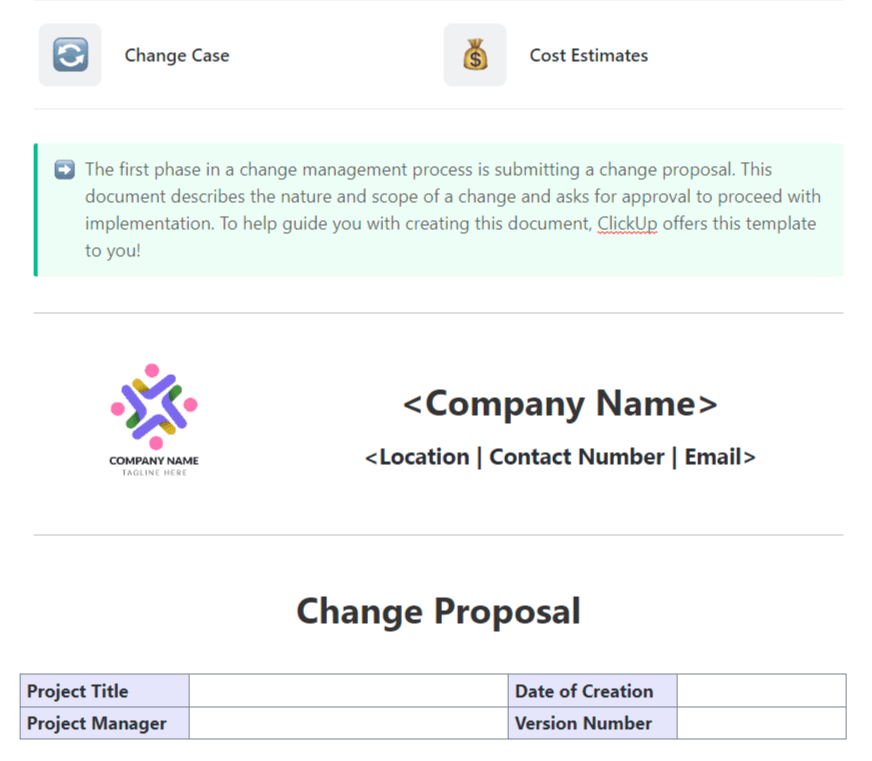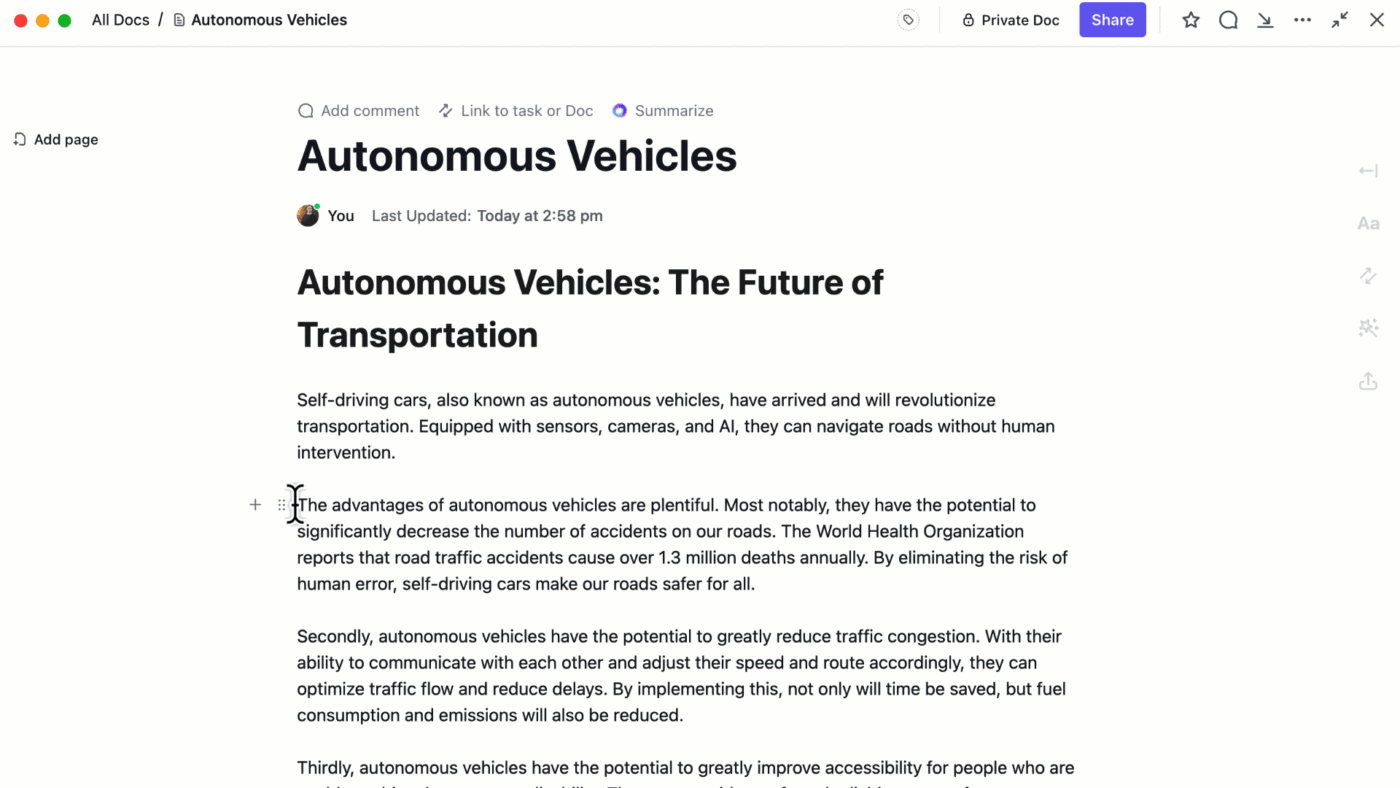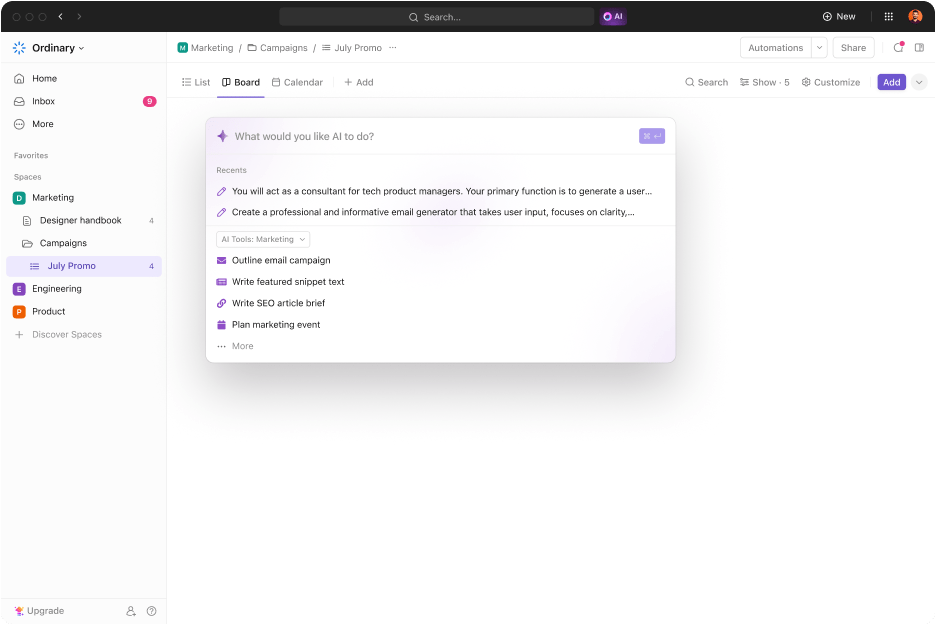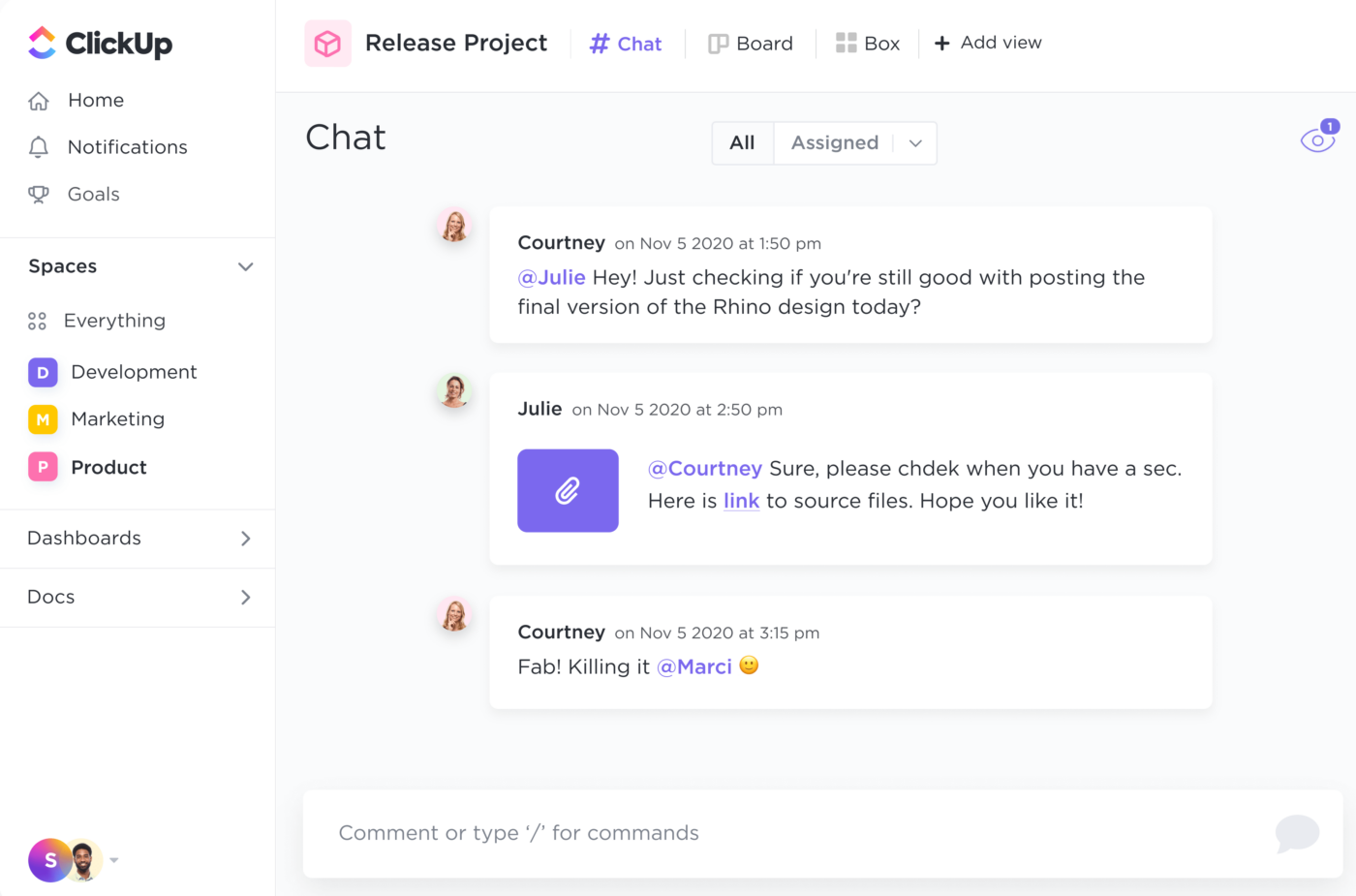

The role of an organizational leader is much like that of a gardener. As a leader, you’re always dealing with agents of change, and a major chunk of your job requires leading people through transformations, nurturing them, and ensuring growth. ?
Bringing about organizational change is a constant theme in successful companies. Just look at Microsoft, Apple, or Tesla—they’re all organizations led by visionary leaders who have rejected the status quo and embraced growth through change efforts.
The only problem is that effective change leadership isn’t a straightforward concept. On average, 70% of change initiatives fail because of challenges like staff resistance and poor insight into the bigger picture.
In this guide, we’ll explore the intricacies of successful change leadership, covering:
- Proven change leadership models
- 10 strategies to become a successful change leader
- Tips to avoid threats while leading change
- What Is Change Leadership?
- 4 Proven Change Leadership Models to Lead Change Effectively
- 10 Strategies for Becoming an Effective Change Leader in 2024
- 1. Establish a clear vision with defined OKRs
- 2. Craft an action-oriented strategic plan
- 3. Create detailed documentation across change phases
- 4. Humanize your change-related communication
- 5. Establish a support system for employees
- 6. Identify and address team resistance
- 7. Establish accountability for change management tasks
- 8. Promote continuous learning if the change initiative requires upskilling
- 9. Champion inclusivity
- 10. Rely on progress reports to shape the direction of change
- Benefits of Change Leadership
- Why Change Initiatives Fail: Common Challenges
What Is Change Leadership?
Any change initiative, such as implementing a new business strategy or an operational model, requires extensive effort. You need a step-by-step strategic plan, training modules, and a support system to allow stakeholders to overcome transition-related challenges and reach a desirable outcome.
Change leadership is a people-centric approach to handling inherent conflicts and paradoxes while facilitating organizational-level transformations. It guides leaders to employ their power to influence and inspire action in others.
Prominent leadership researchers Malcolm Higgs and Deborah Rowland have emphasized that successful change leadership is all about leading people with care and foresight. Here’s how they define this concept in their popular study:
Change leadership is the ability to influence and enthuse others through personal advocacy, vision, and the drive to access resources to build a solid platform for change.
Additionally, the change leadership approach establishes change as an ongoing initiative within an organization—and not a finite project. The leader has to groom themselves for tasks like:
- Identifying change opportunities for organizational growth
- Anticipating transition-based pressures that may lead to employee resistance
- Overseeing the change management initiative in terms of scope, speed, and accountability
Pro tip: Need a quick framework to plan and lead organizational adjustments? Jump on the ClickUp Change Management Checklist Template to outline change processes and protocols, manage costs, and prepare your team for the proposed initiative. ?

Change leadership vs. change management
Change leadership and change management are often used interchangeably, but their distinction goes beyond mere semantics.
Change management involves employing a set of tools or structures to maintain control over any change effort—the aim here is to introduce shifts within a company gradually. The focus is on the iterative process and top-down imposition. You authorize small-scale adjustments to mitigate the impact of change at a measured pace, making the initiative cost-effective and minimizing disruption and the risk of failure.
On the other hand, change leadership adopts a disruptive, long-term perspective. It’s the force and vision that drives action toward large-scale transformation. It empowers every individual within the company to be an agent of change, emphasizing collaborative culture over top-down imposition.
According to Gartner’s research on organizational change, 80% of companies follow a top-down change management approach, implementing strategic decisions through organization-wide communication. However, this approach has a success rate of a mere 34%, often exacerbated by communication gaps between executives and entry-level employees.
Recognizing these barriers, chief human resources officers (CHROs) worldwide prefer the more social model of change leadership, leveraging abstract factors like a positive work environment, emotional intelligence, and team commitment to make a change stick.
Who is a change leader, and how are they different from change managers?
A proficient change leader operates not as an enforcer but as a facilitator, collaboratively guiding managers and team members to integrate change.
Change leaders distinguish themselves from change managers by focusing on long-term transformation initiatives. Instead of imposing new directives, they empower employees to contribute to change initiatives.
On a macro level, the pivotal responsibility of a change leader is to foster confidence among employees and build collective faith in the proposed changes. Here are some essential skills that successful change leaders display:
- Open communication
- Collaborative spirit
- Commitment to help employees feel safe
- Can-do attitude
- Curiosity to explore promising strategies
- Emotional intelligence
- Strategic thinking
- Adaptability
General Electric (GE) Company, a leading multinational conglomerate, is a perfect case study for registering the impact of change leaders. The company launched successful change initiatives by tapping into market intelligence through the sustainable use of human capital. It witnessed a 25% jump in ROI by pushing for more creativity in leadership roles.
4 Proven Change Leadership Models to Lead Change Effectively
A change leadership model offers a structure to nurture collective involvement and help the company evolve. Let’s discuss four popular change frameworks used by successful leaders.
1. McKinsey 7-S model
Developed by Robert H. Waterman, Jr. and Tom Peters in the late 1970s, this model identifies seven components as keys to effective change:
- Shared values
- Structure
- Style
- Skills
- Staff
- Systems
- Strategy

The idea is to use these seven components to restore stability while implementing a change initiative. You build a chain of command and define every step of the process, factoring in both operational and emotional factors.
The McKinsey 7-S model often works for large business chains like McDonald’s but tends to have lower success rates overall due to its complexity.
2. Kotter’s 8-Step model
Retired Harvard Business School professor and leading management consultant John Kotter developed an eight-step methodology to sustain momentum for lasting organizational change. His model involves:
- Creating a sense of urgency that allows employees to see the issues with the status quo and embrace change
- Building a change team of departmental leads and key resource personnel
- Articulating a vision statement to outline:
- The desired change initiative
- Steps to get there
- Communicating the vision with the entire organization
- Removing barriers to change through action, such as:
- Introducing training manuals
- Maintaining resources to support change
- Developing employee confidence and acceptance through short-term wins
- Leveraging the small wins to maintain momentum
- Embedding the change within the company culture and processes
This model is best suited for large enterprises, but it’s often criticized for not incorporating employee feedback.
3. Bacharach approach
This method, developed by Cornell University professor Samuel Bacharach, encourages leaders to be change agents by thoughtfully crafting the change plan and allowing it to permeate the company organically.
The Bacharach approach aims to curb the ill effects of the top-down philosophy—you don’t announce change and let the employees deal with it, but do the groundwork to ensure your team is psychologically receptive to the initiative. The focus is on:
- Setting up an agenda for change
- Mapping the organization’s operational and cultural terrain
- Brainstorming methods to get your team to support the agenda
- Holding space for your team to accept the change
4. ADKAR model
Developed by successful entrepreneur Jeffrey Hiatt, the ADKAR model focuses on employee education about change value and the shifts in their day-to-day. As a leader, you support them through five stages: Awareness, Desire, Knowledge, Ability, and Reinforcement.
This model offers a solid people-centric approach to change leadership, focusing on managing the human side of things to drive success. Engaged employees are more likely to cooperate and be productive during change management processes.
10 Strategies for Becoming an Effective Change Leader
No matter what change leadership model you choose, certain practices are common to most frameworks. We have compiled the 10 must-use strategies that’ll help you become the most progressive change leader at any scale. We’ll also explore solutions within ClickUp’s Project Management Suite that make change-related processes smoother.?
1. Establish a clear vision with defined OKRs
Successful change leaders anticipate employee concerns and incorporate solutions into their vision. The vision should explain how the proposed change aligns with core company values and leads to organizational well-being, helping employees overcome fears and stay engaged in change management processes.
One way to define team goals for any change process is through Objectives and Key Results (OKRs). The role of OKRs in transformative leadership came to the forefront when Larry Page, the CEO of Alphabet and co-founder of Google, attested to their influence on Google’s growth:
OKRs have helped lead us to 10x growth, many times over. They’ve helped make our crazily bold mission of “organizing the world’s information” even more achievable. They’ve kept the rest of the company and me on time and track when it mattered the most.
Crafting the best OKRs for change is a cakewalk with an all-in-one project management tool like ClickUp. For instance, with ClickUp Goals, you can develop measurable, time-bound goals trackable across different phases of your change initiative—this allows you to register small wins and keep your team motivated.
Bonus: Write an impressive and clear vision for change with the ClickUp Change Proposal Template. It allows you to streamline all proposed steps, OKRs, and resources to keep your stakeholders updated on what’s to come.

2. Craft an action-oriented strategic plan
Engage your team in a detailed discussion and create a comprehensive change execution plan. Aim for leveraging transparency in building trust and sustaining employee motivation, enabling them to connect with your vision and understand their roles in ensuring success.
Take the first step toward brainstorming plans with ClickUp Whiteboards, picked by G2 as one of the leading collaborative whiteboard tools in 2023. With this feature, you can convert any element on the board into a task with just a few clicks, allowing your team to work on approved ideas on the spot.

End the ideation process by visualizing every part of the change plan you’ve created—including priorities, structures, behaviors, and required resources—with the help of ClickUp Mind Maps. This feature helps connect plan components to processes on a visual canvas, making it easier for key stakeholders to grasp the big picture quickly.
3. Create detailed documentation across change phases
Change initiatives can feel scary because they bring uncertainty to employees’ schedules. The solution? Remove that fear through detailed documentation that can guide your teammates every step of the way.
ClickUp Docs is your best friend here! This feature provides an organized platform for creating diverse documents, including knowledge bases, user guides, process adjustments, and SOPs. With unlimited pages and functions like collaborative editing and predefined headers, you can create a rich resource center to support your change initiative in no time.

The Relationships feature within Docs simplifies file management by letting you link related tasks and pages, ensuring easy access. You can also tag documents to help your teammates retrieve information faster.
Additionally, boost your documentation workflow with ClickUp AI. It contains 100+ prompts tailored to different needs. Use it to create preformatted process documents, write employee communication, and brainstorm ideas to boost efficiency across projects and dashboards.

4. Humanize your change-related communication
Effective change leaders prioritize building more relaxed communication channels to boost the receptiveness of their messaging. The idea is to encourage employees to evaluate the initiative without being stressed, voice their concerns, and actively participate in the dialogue before the change processes go live.
For example, you may want to skip a boring email and conduct meaningful chat sessions or one-on-one meetings with key employees to deliver change-related messages. Humanizing change communication is all about addressing fundamental questions around the need for change, the benefits of change, and what’s in it for the team.
The ClickUp Chat view is an excellent option if you want to be more accessible to your team. It lets you embed spreadsheets, webpages, videos, and more into your conversations, making your communication quick and helpful.

You can also use the ClickUp Employee One-on-One Meeting Template to set the stage for more relaxed dialogues with individual team members.
5. Establish a support system for employees
Once you launch the change initiative, provide consistent support to nurture your team and foster a pro-growth culture. This strategy requires addressing grievances and checking in with your team to acknowledge what they’ve been experiencing.
Note that even the slightest hint of displeasure should call for immediate attention, especially if the proposed changes are extensive. If you notice process-related dissatisfaction, showcase the broader perspective to your team to win their confidence. ?
With ClickUp, you can encourage team members to share feedback on change-related tasks using comment threads and Mentions. Your employees can use Assigned Comments to request clarification on specific issues, all trackable until the problem is resolved.

6. Identify and address team resistance
Intra- and inter-team conflicts can be unavoidable when implementing major organizational shifts. Change leaders should conduct baseline assessments to:
- Understand why employees view change as a threat
- Address the root cause uncovered
- Seek resolutions that benefit all parties involved
Providing consistent support and onboarding training minimizes team resistance during the change effort.
As a change management software, ClickUp offers a host of templates to promote collaborative teamwork and minimize resistance to change. For instance, the ClickUp Change Management Template can be your go-to for comprehensive change management. It comes with Custom Statues and four unique ClickUp views to track tasks.

That’s not all—if you end up facing team resistance in any form, you can map out the issue and find solutions using the ClickUp Root Cause Analysis Template.
7. Establish accountability for change management tasks
To facilitate any company shift, the change leader has to foster a culture of accountability and encourage employees to embrace responsibility and ownership. You can:
- Keep track of change-related commitments
- Define roles and responsibilities based on the complexity of the initiative
- Set deadlines and milestones for critical wins
The best way forward is to set up an interconnected network of change management tasks. Luckily, most project management tools support task management, including ClickUp.
With ClickUp Tasks, you get the whole set of task management functionalities, such as creating dependencies, trackable due dates, and delivery timelines. You also enjoy native Project Time Tracking to gather insights into the complexity of various change management activities, which helps you establish accountability based on reliable data.

8. Promote continuous learning if the change initiative requires upskilling
In today’s age of digital transformations, many change initiatives require employees to upskill themselves. If that’s the case for your company, actively prepare your workforce for the planned changes.
Design new courses and training sessions for the affected teams or steer them toward suitable resources. To fight back potential resistance, you can also provide incentives to employees who prioritize upskilling. ?
9. Champion inclusivity
Many organizational change programs are an excellent opportunity to attract a more diverse workforce and boost brand image. Change leaders should weave a culture of equity and inclusivity into their plans by considering various dimensions of diversity, such as ethnicity, disability, or education level.
On the other end of the spectrum, the initiative could also be about recording the perception gaps based on employee identities and using the insights to bring about changes.
Looking to prioritize diversity, equity, and inclusivity (DEI) as a change leader? Try out the ClickUp Diversity Equity and Inclusion Strategic Plan Template.
10. Rely on progress reports to shape the direction of change
Successful change leaders often adopt innovative decision-making methods to stay alert in the face of day-to-day implementation challenges. It’s common to face setbacks like failed deadlines or reduced employee engagement in the peak of transition processes. The leadership team must anticipate and learn to work with these roadblocks to ensure the end goal is achievable.
To sum it up, you need to continuously track progress, accommodate adjustments for minor setbacks, and plan further change initiatives based on your team’s receptivity.
ClickUp offers a variety of tools, such as Dashboards, Gantt Charts, and customizable Calendars for progress monitoring. They enable you to keep your change processes flexible and agile even during uncertain times.
Benefits of Change Leadership
Let’s visit some key benefits of incorporating change leadership strategies.
Positive impact on profitability
Poorly executed change programs lead to the loss of employees and even customers. These high attrition rates eventually reduce sales and profitability.
Since change leadership requires aligning micro and macro-level changes at both business and employee levels, the risk of losing business is significantly low.
Efficient growth roadmap
A company with a skilled leadership team can not only navigate planned changes adeptly but also innovate swiftly. This makes it easier to introduce new products or services and conquer untapped markets.
Balanced company culture
Celebrated business leader Simon Sinek proposed the Golden Circle Framework to guide organizations—the framework highlights how people are more driven by beliefs than actions. Luckily, change leadership rationalizes not just the WHAT and HOW but also the WHY of the proposed action.
Most change leadership strategies are rooted in optimism and transparency, enabling teams to be more productive, enjoy job satisfaction, and diligently work toward growth outcomes.
Why Change Initiatives Fail: Common Challenges
While change leadership is among the most transformative management styles, it’s wise to expect and prepare for a few common challenges.
Employee resistance and workplace conflicts
Conflicts, whether among employees, between an employee and a manager, or even between departments, can disrupt operations and impact your change workflow. Resolving these conflicts right away is vital for maintaining momentum.
Delayed timelines
Delays due to mental blocks, impromptu meetings, and poor communication are common during change drives. As a leader, you should draft flexible schedules across change implementation phases so that such diversions don’t prolong project completion times beyond an acceptable level.
Handling layoffs
Depending on the industry, companies may propose organizational change by reducing staff or redistributing responsibilities among existing employees. The leader should see that these changes are implemented with tact and sensitivity so that the company image does not suffer.
Embrace Change Leadership with ClickUp
Managing change demands more than a conventional leadership approach. The strategies we discussed will help you carve a balanced path to progress for your team and ensure the organization’s success.
Following the best change leadership practices is easier with ClickUp and its robust suite of change management templates and functionalities. Sign up for free today and become the leader your team needs!



